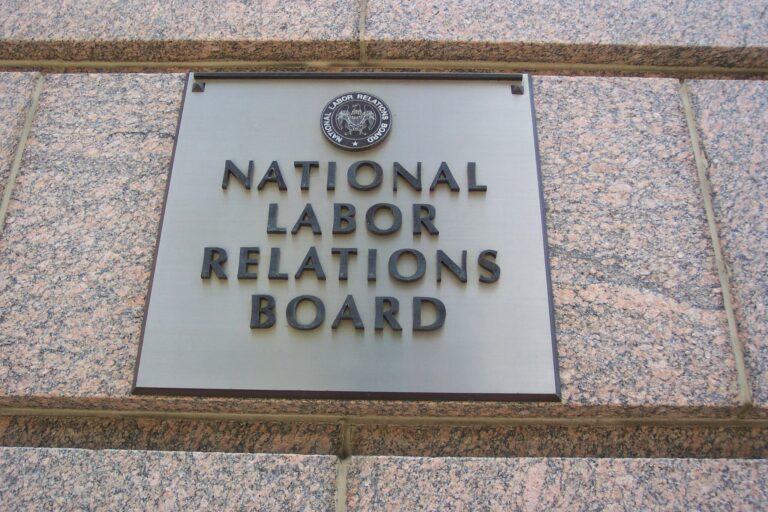
David Madland is a Senior Fellow at the Center for American Progress Action Fund.
In one of the more important advances in collective bargaining around the world, New Zealand recently passed an innovative sectoral bargaining policy, called Fair Pay Agreements. Labor supporters in Britain and Australia want to replicate elements of the policy in their countries, while for American audiences the most important lesson may be how New Zealand’s experiences highlight that sectoral bargaining — in conjunction with worksite bargaining — is necessary to improve working conditions in today’s economy and thus should be part of policy efforts to strengthen unions.
Sectoral bargaining, sometimes called broad-based bargaining or industrywide bargaining, is a type of collective bargaining between unions and employers that sets minimum standards on issues such as wages, benefits, safety, and training for all workers in a sector or occupation. Under New Zealand’s fair pay system, unions and employers will bargain for minimum terms and conditions for all employees in that industry or occupation. The agreements set a floor; unions and workers can still bargain at the worksite for higher standards, as is common in most sectoral bargaining systems. Richard Wagstaff, president of New Zealand’s Council of Trade Unions, explains:
[Fair pay agreements] stop the race to the bottom by setting the minimum rates, terms and conditions which must be paid within an industry. However, they still allow flexibility, people still have to negotiate their pay rates and conditions of work, but FPA’s mean there are minimum standards employers have to meet.
There are numerous policy details about what must be included in fair pay agreements and how the bargaining process works — which a prior OnLabor post on a draft fair pay bill described — but what most American audiences really need to know is why New Zealand adopted this policy.
Policymakers recognized sectoral bargaining, rather than just improvements to their existing worksite-level bargaining system, was necessary to help balance power between workers and corporations. New Zealand’s history as well as international research highlights that sectoral bargaining is a proven solution to address stagnant wages, rising economic inequality, and low productivity growth.
For many decades, New Zealand had an industrywide arbitration system — a unique style of sectoral bargaining shared only with Australia — that led to wage growth, low levels of economic inequality, and strong unions. In the late 1980s and early 1990s, however, New Zealand undertook a series of changes that eliminated sectoral bargaining and dramatically weakened unions.
The impact of these labor laws was dramatic. Union membership and collective bargaining coverage declined quickly. In the early 1980s, union density was around 65 percent and collective bargaining coverage almost 70 percent; both fell to 22 percent and 30 percent, respectively, by the late 1990s. Not surprisingly, as union density and collective bargaining coverage fell sharply, workers and the economy fared poorly. Wage growth was stagnant for more than a decade, low-wage work increased, inequality rose, and productivity growth slowed.
In 2000, New Zealand passed legislation to improve its workplace-based bargaining system by increasing legal protections for unions and collective bargaining and encouraging “good faith bargaining” at the worksite. These policy changes made New Zealand’s labor policy more akin to U.S. policy and curbed some of the most extreme aspects of the earlier law. Unfortunately, the changes did not have much substantive impact. As a study explained, these American-style labor policies “made little difference to the scope or extent of collective agreement making.” Indeed, in 2000, union density was 22 percent according to the OECD and 18 percent by the most recent figures; bargaining coverage has fallen to similar levels.
In other words, in New Zealand the elimination of sectoral bargaining caused significant problems and attempts to improve worker power without a strong push for sectoral bargaining did not work.
While New Zealand’s own experiences were critical in shaping views about the importance of sectoral bargaining, so too were comparisons with other countries and international research highlighting the value of broad-based bargaining.
As many New Zealanders recognized, neighboring Australia had also weakened its system of sectoral bargaining in the 1980s and 1990s and consequently suffered similar economic problems. Likewise, Australia also enacted legislation to strengthen unions and improve workplace bargaining as an attempted corrective in 2009, but the policy did not succeed there either.
International academic research around the world has increasingly highlighted the benefits of sectoral bargaining to workers and the economy. Studies show that sectoral bargaining significantly increases the number of workers covered by collective agreements which leads to higher wages, better benefits, and safer working conditions. As the researchers at the OECD explain, “[C]ollective bargaining coverage is high and stable only in countries where multi-employer agreements (i.e. at sector or national level) are negotiated.” Research also finds that sectoral bargaining helps close pay gaps for women and people of color, significantly reduces economic inequality and can help boost productivity.
This international evidence was important in the debate about fair pay agreements. As New Zealand’s minister for workplace relations and safety explained, the agreements are “built on international evidence described by the OECD Directorate for Employment, Labour and Social Affairs as the positive benefits that a level of sector-based bargaining can have in labour markets.” Similarly, Jan Logie, a supportive member of the Parliament, argued, “[T]he international evidence is really clear: strong unions and collective bargaining frameworks are the best tools for delivering decent pay, stable jobs, and safe workplaces.”
Fair pay agreements are part of a number of pro-worker policies that the New Zealand government has enacted, including strengthening union rights, promoting pay equity, and increasing the national minimum wage. (Fair pay agreements would set standards above the national minimum wage, enabling collective bargaining to do more of the “heavy lifting” of setting minimum standards for covered workers.) New Zealand policymakers recognized that they needed to rebalance power between workers and employers and viewed sectoral bargaining as a critical piece of this rebalancing.
As the United States seeks to rebalance power in the economy, New Zealand’s efforts to strengthen sectoral bargaining deserve attention. Elements of fair pay agreements may be worth attempting to replicate in the United States, although there are many other policy models in the United States and around the world that could increase sectoral bargaining. Most importantly for worker allies in the United States, the debate about the new agreements highlights the growing understanding among union leaders, scholars, and policymakers around the world that sectoral bargaining — in conjunction with worksite-level bargaining — is essential to making today’s economy work better for working people.










Daily News & Commentary
Start your day with our roundup of the latest labor developments. See all
May 6
HHS canceled a scheduled bargaining session with the FDA's largest workers union; members of 1199SEIU voted out longtime union president George Gresham in rare leadership upset.
May 5
Unemployment rates for Black women go up under Trump; NLRB argues Amazon lacks standing to challenge captive audience meeting rule; Teamsters use Wilcox's reinstatement orders to argue against injunction.
May 4
In today’s news and commentary, DOL pauses the 2024 gig worker rule, a coalition of unions, cities, and nonprofits sues to stop DOGE, and the Chicago Teachers Union reaches a remarkable deal. On May 1, the Department of Labor announced it would pause enforcement of the Biden Administration’s independent contractor classification rule. Under the January […]
May 2
Immigrant detainees win class certification; Missouri sick leave law in effect; OSHA unexpectedly continues Biden-Era Worker Heat Rule
May 1
SEIU 721 concludes a 48-hour unfair labor practice strike; NLRB Administrative Law Judge holds that Starbucks committed a series of unfair labor practices at a store in Philadelphia; AFSCME and UPTE members at the University of California are striking.
April 30
In today’s news and commentary, SEIU seeks union rights for rideshare drivers in California, New Jersey proposes applying the ABC Test, and Board officials push back on calls for layoffs. In California, Politico reports that an SEIU-backed bill that would allow rideshare drivers to join unions has passed out of committee, “clear[ing] its first hurdle.” […]